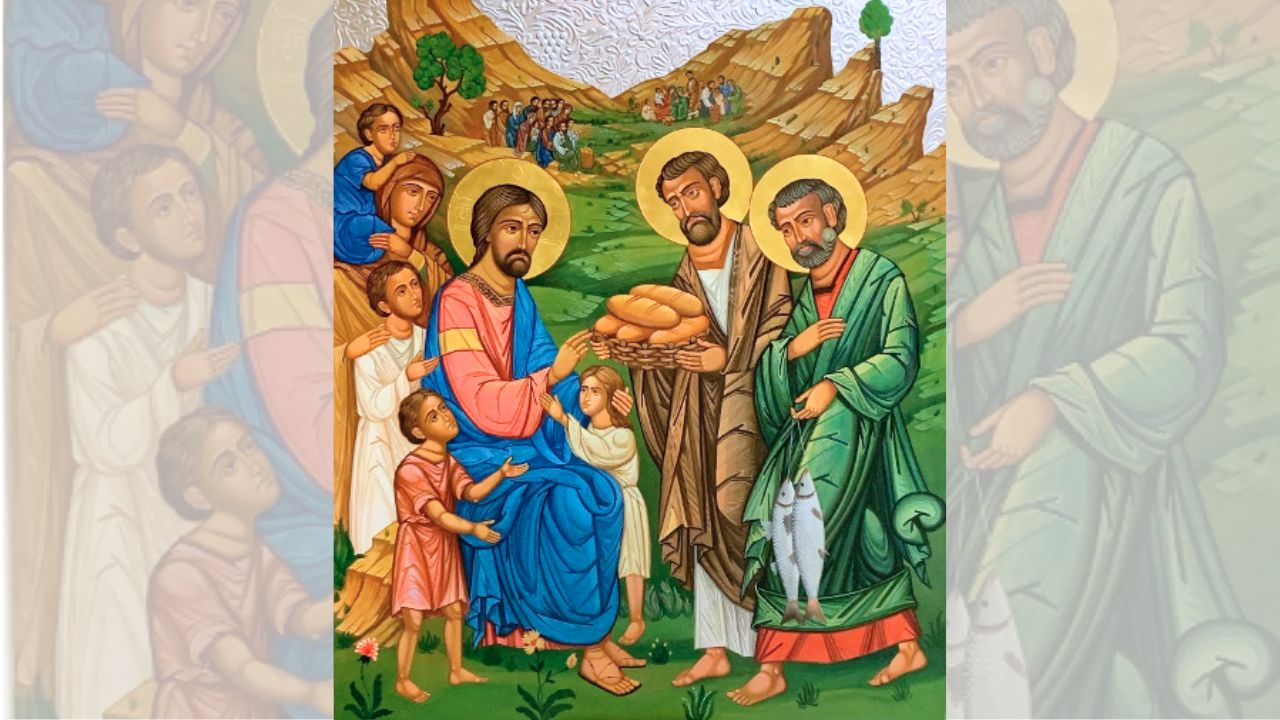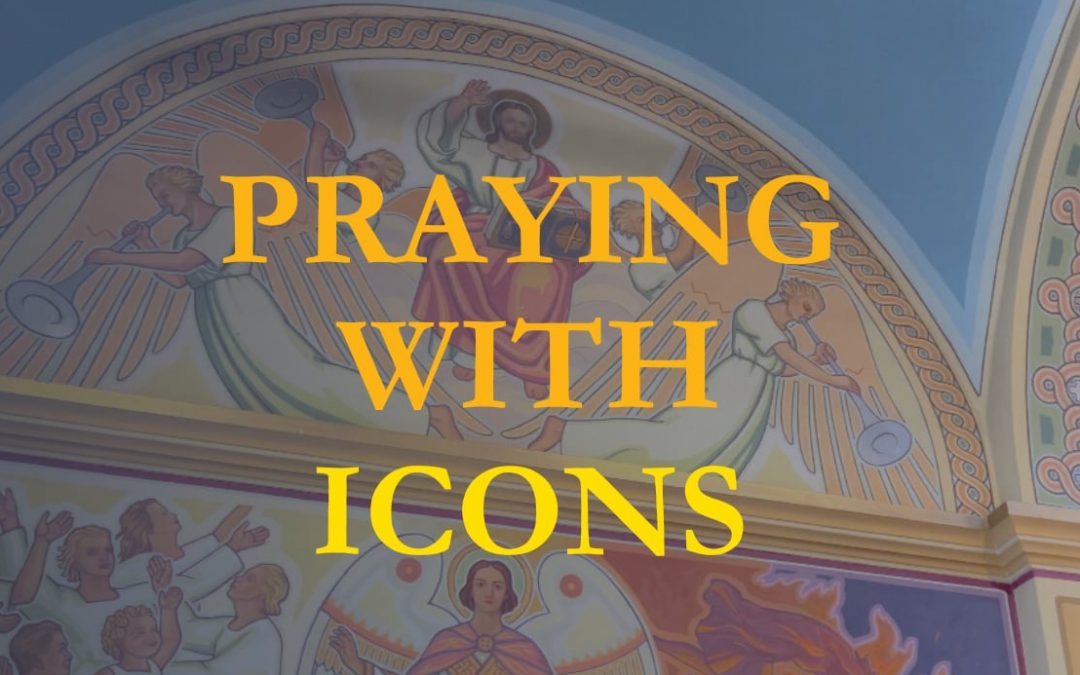Praying with Icons: Windows into Heaven
Reflections on Growing in Our Friendship with Christ by Bishop David Motiuk, Ukrainian Catholic Eparchy of Edmonton
November 2024
Feeding of the 5,000. More than enough.
We are beginning our journey towards Christmas, the Feast of the Nativity of our Lord Jesus Christ. In the Christian East, we do so on the Feast of Saint Philip celebrated on November 14, the so-called Philip’s Fast or Nativity Fast, some 40 days before Christmas, mirroring the Great Fast before Easter. In the Christian West, our journey begins on the first Sunday of December, marking the beginning of the liturgical year in Western Christianity.
The Church invites us to prepare ourselves in mind, body, and spirit for Christ’s birth. We fast before we feast. Our preparation is an expression of a time of expectant waiting, waiting for Christ’s Nativity and anticipating his Second Coming. Fasting and Feasting. It seems appropriate that we should fast before we feast. After all, it was Adam and Eve’s failure to fast from the forbidden fruit from the Tree of Knowledge in the Garden of Eden that resulted in God banishing them from Paradise.
Like Adam and Eve, we often make choices that lead us on paths that take us away from God rather than bringing us closer to him. As we prepare for Christmas let us reflect on the “Miracle of the Five Thousand” by way of responding to God’s call to become Christ’s disciples, growing in holiness.
The “Miracle of the Five Thousand” is found in Matthew’s Gospel (14: 13-21). Jesus has just learned that John the Baptist had been killed. He tries to get away from the crowds to pray but the crowds crush in on him. Jesus has a passion for them and cures their sick. Matthew continues the story:

When it was evening, the disciples came to Jesus and said, “This is a deserted place, and the hour is now late; send the crowds away so that they may go into the villages and buy food for themselves.” Jesus said to them, “They need not go away; you give them something to eat.” They replied, “We have nothing here but five loaves and two fish.” And he said, “Bring them here to me.” Then he ordered the crowds to sit down on the grass. Taking the five loaves and the two fish, he looked up to heaven, and blessed and broke the loaves, and gave them to the disciples, and the disciples gave them to the crowds. And all ate and were filled; and they took up what was left over of the broken pieces, twelve baskets full. And those who ate were about five thousand men, besides women and children.
Megan McKenna, in her book Not Counting Women and Children: Neglected Stories from the Bible, offers us an interesting reflection on the story. She says that the reason the crowds don’t want to leave Jesus is that they have been touched by some sort of hope, some possibility of change, of graceful living in the midst of their questions, confusion, and pain.
The disciples have other plans when confronted with the crowds, “Send them away!” is a common enough response in our day when confronted with the needs of humanity, not knowing what to do. But Jesus says, “You give them something to eat.” A seemingly impossible command. Megan invites us to imagine the crowd present in Jesus’ day: men, women and children, merchants, beggars, travellers, the curious, the sick, the lame, the blind, lepers, public sinners, prostitutes, tax collectors, scribes, teachers, Pharisees, lawyers, the sick, the elderly, the prostitutes, lepers, tax collectors, the unacceptable, the strangers, Gentiles, and outcasts. In a word – all of humanity.
This lot remarkedly resembles those who make up the Church today, which include: the baptized, those who don’t come to Church but are baptized, those who come but only occasionally, those who are in desperate need, the separated and divorced, the gay and the lesbian, the sick and terminally ill, the old and the poor, the illiterate, the unemployed, those unable to drive, those who are working when we schedule services, those who are unacceptable for whatever reason – weakness, sin, addictions, and so on.
Yet, in Jesus’ story, everyone ate and was satisfied. Jesus took the food intended for the disciples and gave it away. And the crowd saw and did likewise. And there was enough for everyone. The disciples have two jobs in the story: they distribute food and collect the leftovers. Which is the greater miracle – that Jesus multiplies food unnaturally? Or that the people see, trust, risk, hope, and share? God uses the disciples as a model for behaviour, of risking and trusting in a new order, a new way of being with one another and together with Jesus.
This is the story about the Christian vocation, about ministry, about life among the friends and disciples of Jesus in the midst of the vast throngs of people in the world today.
To be a follower of Christ is the story about the vocation of each Christian, of discipleship, about caring for the sick, listening, attending, speaking words of encouragement and hope. To be a follower of Christ is about pooling our resources even when it looks impossible. To be a follower of Christ is about risk.
As we prepare for Christmas and Our Lord’s birth, let us prepare to risk by caring for one another in God’s family. And in that way, erase the error of Adam and Eve, and be readmitted to the Garden of Eden, where we once again will walk with God in Paradise.
Wishing you a blessed Christmas Fast and Advent.
Praying with Icons. Windows into Heaven. Growing in Our Friendship with Christ.

